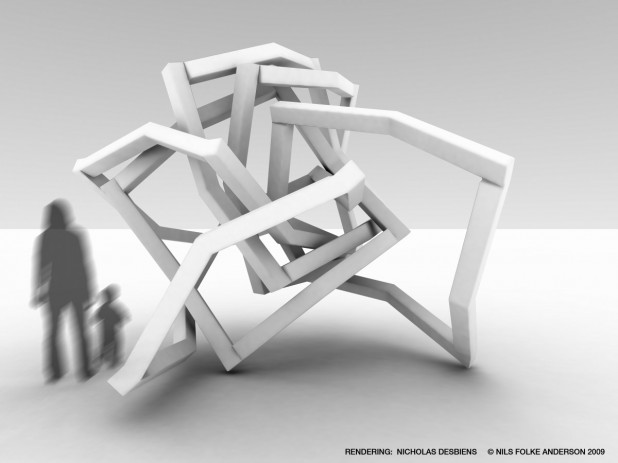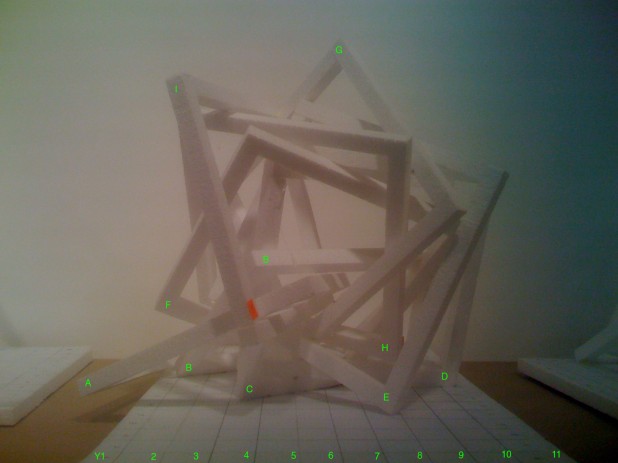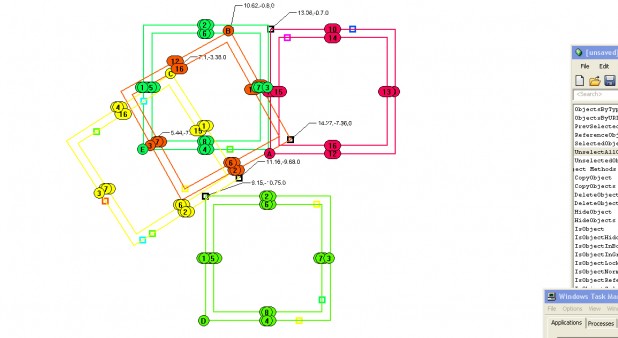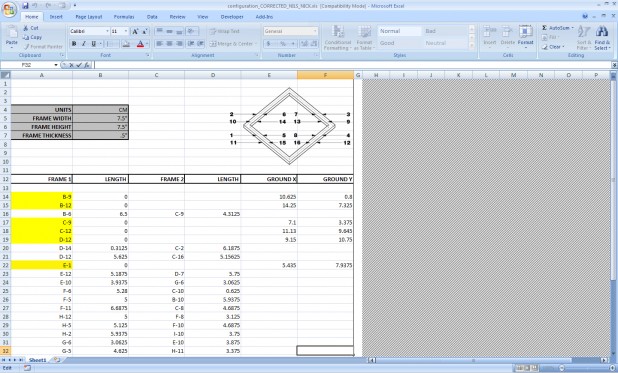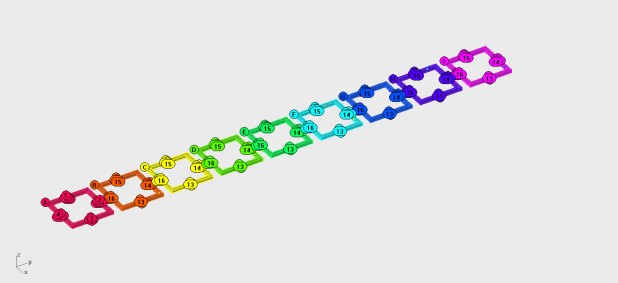Nicholas Desbiens worked closely with the artist to produce presentation renderings for a series of sculptural configurations.
This simulation was made to digitally explore the interaction of the linked frame elements. The frames are allowed to fall under their own weight from an arbitrary start position.
In this exploration, developed in RhinoScript, the frames are allowed to rotate or move in a given random direction until they hit at another frame. While this behavior does not mimic the way one would interact with the frames physically, it does offer another way of understanding the range of motion and configurations allowed by the system.
In this exploration, the frames are pushed and pulled on screen to explore physical interactions within the system.
Images like this (taken and annotated by the artist) served as an early way to communicate geometric information for translation from physical to digital models.
Screen shots like this were used as a communication tool to deal with inaccuracies that are part of the process of converting a rough study model into a more precise digital configuration.
This Excel template was created by Nicholas Desbiens as a tool for automated translation of geometric information embodied in the artist's physical maquettes into digital three-dimensional models. By codifying x, y and z coordinates in a standard form, the information could be read as input data to create an accurate digital model of the configuration conceived in the artist's studio.
Digital model showing 16 registration points on each of the nine frames. Where possible, the x, y and z coordinates of these locations would be measured on the physical model and transferred via Excel to the digital model.



